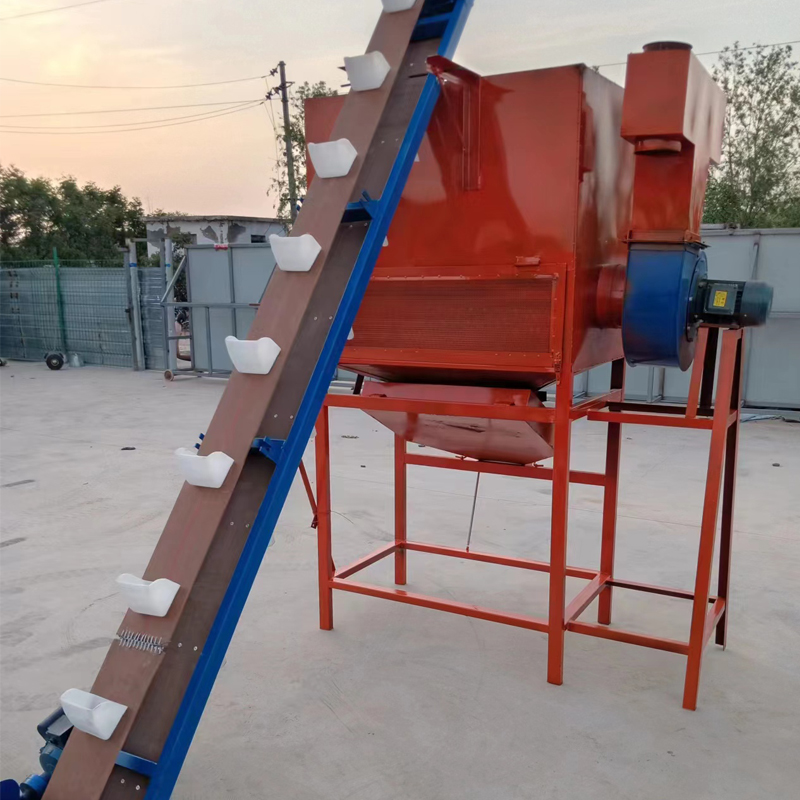Compact Aquatic Pellet Machine for Small Fish Feed Production
វិច្ឆិកា . 27, 2024 10:30 Back to list
Compact Aquatic Pellet Machine for Small Fish Feed Production
The Importance of Small Fish Feed Pellet Machines in Aquaculture
As global demand for fish and seafood continues to rise, aquaculture has become an increasingly vital industry. Small fish feed pellet machines play a crucial role in the production of high-quality feed, which is essential for the health and growth of fish in farming environments. This article explores the importance of these machines, their working principles, and their benefits for aquaculture.
The Role of Fish Feed in Aquaculture
In aquaculture, the health and growth rate of fish are heavily influenced by the quality of feed. Fish are poikilothermic animals, meaning their metabolism is directly affected by water temperature and feed quality. Therefore, providing fish with nutritious, well-balanced feed is critical for achieving optimal growth rates and maximizing yield. This is where small fish feed pellet machines come into play by ensuring the efficient and effective production of feed pellets.
Working Principles of Small Fish Feed Pellet Machines
Small fish feed pellet machines are designed to convert various raw materials into high-quality fish feed pellets. The process involves several steps
1. Ingredient Preparation The first step is the preparation of ingredients. This may include fish meal, soybean meal, corn, and vitamins. The ingredients are mixed in specific ratios to meet the nutritional requirements of the fish being raised.
2. Grinding The blended ingredients are then ground into a fine powder to ensure uniform particle size. This is crucial for the pelletization process, as it affects the binding properties of the feed.
3. Pelletizing The ground mixture is fed into the pellet machine, where it is subjected to heat and pressure. The machine compresses the material through a die to form pellets. The heat not only helps bind the ingredients but also gelatinizes starches, improving digestibility for the fish.
4. Cooling and Drying After pelletizing, the pellets are often hot and moist. They need to be cooled and dried to ensure they have the right texture and shelf life. This step prevents the growth of mold and helps maintain nutritional integrity.
small fish feed pellet machine

5. Packaging Finally, the dried pellets are packaged for distribution. Proper packaging ensures the feed remains fresh and free from contaminants during storage and transportation.
Benefits of Using Small Fish Feed Pellet Machines
1. Nutritional Control One of the primary advantages of using a small fish feed pellet machine is the ability to control the nutritional content of the feed. Farmers can formulate feeds that are tailored to the specific needs of different fish species, enhancing growth and health.
2. Cost Efficiency By producing their own fish feed, aquaculture farmers can significantly reduce their costs compared to purchasing pre-made feeds. This can lead to increased profitability and sustainability of their operations.
3. Quality Assurance Small fish feed pellet machines allow for quality control throughout the production process. Farmers can monitor the ingredients and ensure that the feed being produced is free from harmful additives and contaminants.
4. Customization Different fish species have varying dietary requirements. With a pellet machine, farmers can customize the size and texture of the pellets according to the specific needs of their fish, improving feed acceptance and utilization.
5. Environmental Benefits The production of fish feed through pellet machines can be more environmentally sustainable. By optimizing feed formulations and reducing waste, farmers can lessen the environmental impact of aquaculture practices.
Conclusion
In conclusion, small fish feed pellet machines are indispensable tools within the aquaculture industry. They contribute to the production of high-quality, nutritious feed that supports fish health and growth while offering numerous benefits to farmers. By ensuring cost efficiency, quality assurance, and customization, these machines enhance the overall sustainability of aquaculture practices. As the demand for seafood continues to rise, investing in advanced fish feed production technology will be crucial for meeting the nutritional needs of fish and ensuring the long-term viability of aquaculture.
-
High Performance Exhaust Fan – Efficient Ventilation Solutions for Home
NewsJun.10,2025
-
High-Quality Gestation Pen for Sows Durable Mobile Pig Pen & Simple Pig Pen Solutions
NewsJun.10,2025
-
High Quality Rabbit Cage Double Tier Designs & Welded Wire Mesh Supplier
NewsJun.10,2025
-
Floating Fish Feed Machine - High Efficiency Floating Fish Feed Extruder for Small Scale Production
NewsJun.10,2025
-
Premium Poultry Housing Solutions Mobile & Commercial Free Range Options
NewsJun.10,2025
-
Industrial FRP Fans Corrosion-Resistant Blades & Centrifugal Systems
NewsJun.09,2025






